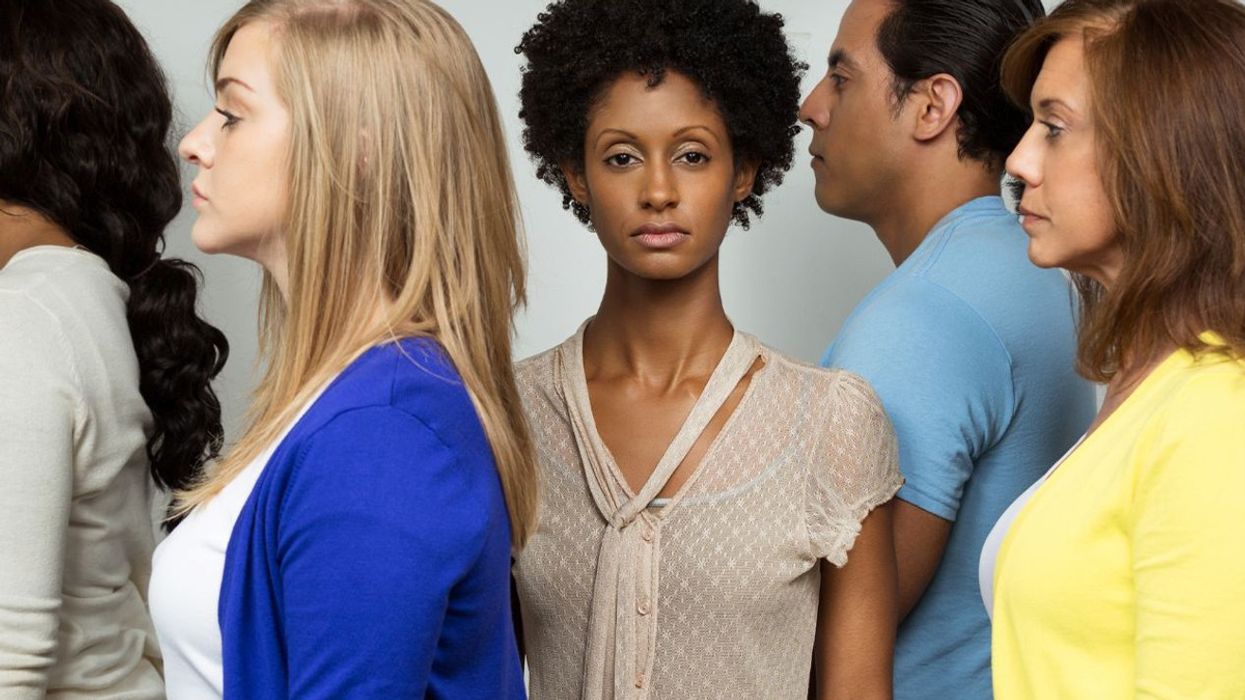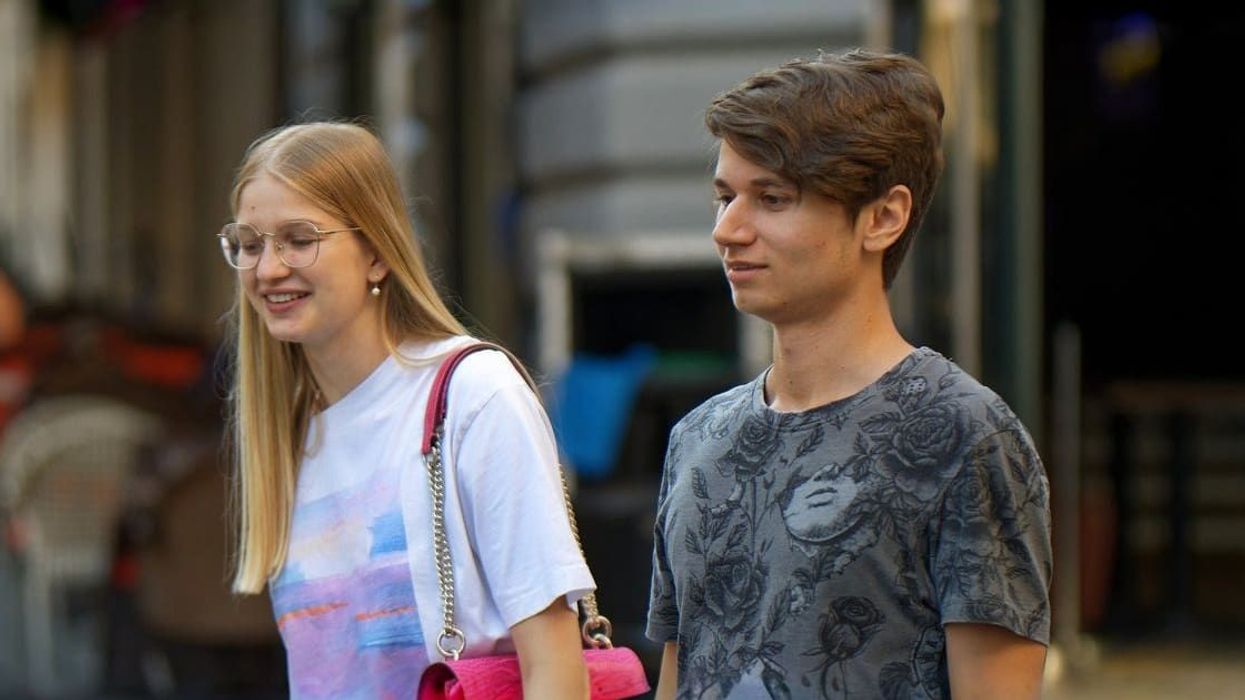Going to the massive Miami art fair Art Basel that happens every year in December can be a headache of gargantuan proportions. You are met not only with the snobbish art world coterie, but with streets teeming with art tourists, hangers on, and curiosity seekers. It's ugly, harsh, and mostly without any cultural context. So, when an invitation to get out of the craziness of South Beach—where most of the action is—to see public art come in, you jump at the opportunity.
Leaving the screechy incalculable commerce in the dust, I drive down a canopied road in suburban Coral Gables, and when I get out of my car, I take a deep breath. The clean air belongs to the Fairchild Tropical Botanic Gardens, which sprawls out over 83 acres of horticultural and artistic diversity. There are sculptures everywhere, ranging from classic to Zimbabwean to very contemporary—the latter works, a partnership between mega-gallery Gagosian and the Gardens, being the focus of our tour. Kara Vander Weg, a director at Gagosian Gallery in New York, describes getting two large-scale works by the late sculptor John Chamberlain to their green down a grassy path at the edge of an alligator lake, where they will rest until April. “Chamberlain had a studio in Sarasota,” Vander Weg tells me in the shade of an oak tree. “They were installed in the Seagram Plaza, and we wanted to see them in a more natural location. We wanted to see them in counteraction to the rigidity and urbanity of the city.”
I'm reminded of the various contexts for public art. There are things like Chris Burden's “Urban Light” (the old-timey lampposts seen in the Ashton Kutcher / Natalie Portman romcom No Strings Attached) outside of the Los Angeles County Museum of art, or Anish Kapoor's “Cloud Gate” (or “The Bean” as is it's called fondly by Chicagoans) in Chicago's Millenium Park. These fall into the category of ubiquitous urban landmarks. On the more ephemeral side, the New York-based Creative Time and the Los Angeles Nomadic Division and organizations throughout the world dedicate themselves to promoting art in the public space. Oftentimes, these non-profits organize installation exhibitions or performances that are open to the public, and allow artwork to be taken outside of the commercial or institutional space. There's an important problem in the art world: galleries and museums can feel intimidating or unfeeling. Bringing work into the public sphere is almost always rewarding in it's immediate engagement. The Fairchild, while primarily being a public botanical garden, and secondarily serving as a Florida International University affiliated biodiversity and conservation lab, serves a tertiary purpose as a sculpture garden. The land itself is so diverse and varied that it seems like art peeks out from the most unexpected corners, and enmeshes itself with the wooded, pastoral beauty of the park.
Chamberlain's sculptures are crinkled metal knots—like French horns that have been run over by a Hummer—one green and the other copper. “They are up for a good long time for them to weather,” Vander Weg jokes. “Actually, they're pretty hardy; they were installed during the hurricane at Seagram Plaza, and they were fine, so that's why we were like, 'Ah! We can leave them for months and they'll be fine.'” The Chamberlains glint in the warm Miami winter sun—a certain type of sculpture is perfect for this type of specific site.
Just up the path, past the baobab trees and the butterfly pavilion, is another site-specific work, Cuban-born artist Jorge Pardo's bulbous “Garden Lamps,” dangling down like Spanish moss from a giant oak. These, when lit, will provide a gathering space at night, which offers a dialogue between the public works project that Vander Weg envisions for the Fairchild-Gagosian partnership. “Public spaces are very important to us,” says Vander Weg, “because as much as we are a commercial gallery, we don't want to be in a hermetic environment. We want the work to be out there in the world, as do the artists.” In the open air, the lanterns seem organic, like they could be there forever, and they would just seem like a part of the park. This is the beauty of the work; once you start to dig, and find out more, it's as if a dialogue was living in the branches of the trees. What is a public gathering space? And what compels us to migrate towards illuminated space for these gatherings? The lamps put a perfect perspective on calm nighttime wanderings in the quietude of nature.
The Fairchild has a long history with artistic creation, having started the Art at Fairchild program in 2005. While on the tour of the grounds, we pass by two Zimbabwean artists creating sculptures in a tent. We wave to each other. There is a large collection of permanent Zimbabwean sculpture—devastating political scenes and beautifully spiritual works—that line a side of the lake. As well, there is a series of art benches, called Sitting Naturally. Two of the artists, Sebastian Errazuriz and Sam Baron, have accompanied the tour. Errazuriz's bench, called “Time Before Dawn,” has a chandelier over it. “Wind and crystals don't work well together,” Errazuriz explains about the challenge of working in an alfresco environs, “so with this chandelier, I had to make sure that it wasn't going to smash into the pillar with the gushes of wind, and break. Electricity and water don't mix either, so I was really scared I was going to burn down the park if I had a short circuit, so in the end we had to use LEDs that work with a little transformer that's the same amount of energy that you use with your cellphone.” The piece works magically—it's a work inspired by his grandmother telling him about grand parties, with lavish chandeliers in beautiful ballrooms.
Public art is important in any place, but when the space is already a beautiful one like the Fairchild, it can enhance the experience by adding a layer more—something to chew on. I watch as a hummingbird flits around the bench; Vander Weg's eyes follow it. For a second, everything is quiet and relaxed, the public works creating an oasis from the South Beach madness. Public works like this, even though there is art everywhere in Miami during Basel, create a sort of anti-Basel experience, where contemplation is available, and nothing is forced. There is a serenity to it all. I realize Vander Weg has had the best Art Basel of all of us. “Coming here every day to install the sculptures is a pleasure, of course,” she says with a smile.
Images John Chamberlain, Chamberlain at Fairchild; Jorge Pardo, Garden Lights; Hammer Lamps; Dawn Before Time Bench by Sebastian Errazuriz; Keep Walking Bench; Melancholia Stool by Pedro Barrail; Salt Point Table by Gael Appler; La Georgette Bench by Sam Baron; Bird Perches by John-Paul Philippe; Chitra Bench by Michele Oka Doner
To read more about Art Basel click here.
















 Otis knew before they did.
Otis knew before they did.